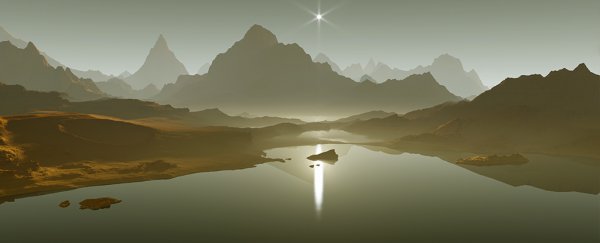A radar technique used to measure the density of snow at the Earth's poles has been used to analyse the bodies of methane pooling on Saturn's largest moon, Titan, confirming that the lakes' surfaces are all close to mirror smooth.
That might be bad news if you were ever hoping to hang-ten in liquid hydrocarbons, but for astronomers wanting to land a probe on the moon, it means no need to worry about accounting for strong winds.
The work conducted by a team of US researchers used a technique called radar statistical reconnaissance to analyse data collected by the Cassini probe over the Ligeia, Kraken, and Punga seas in Titan's northern hemisphere.
The technique has been useful in measuring the roughness of ice in the Arctic and Antarctica, as well as evaluating prospective landing sites for NASA's InSight Mars mission, prompting researchers at NASA's Jet Propulsion Laboratory to suggest it be used to check out Titan's lakes.
It's hard not to feel a special love for Titan, given it's the only place in the Solar System other than Earth where liquid collects on the surface. Sure, the moon's super-cold seas consist of the hydrocarbons methane and ethane, rather than tropical salt water, but why be picky?
Setting aside the fact that the volume of hydrocarbons in those lakes is several hundred times the amount we have in our fossil fuel reserves, the complex organic materials in those liquids tantalisingly hint at life-like chemistry, if not the tiny chance of life itself.
The moon also has a fairly thick nitrogen-based atmosphere, and possibly even a weather system that includes hydrocarbon rain. Let's go already!
NASA's Cassini mission captured plenty of radar data during flybys of Titan between 2007 and 2015, which was used to map the seas top to bottom and find their surfaces were all virtually flat.
This new study provides an independent evaluation on estimates of the surface textures, confirming wave sizes in more than one dimension and allowing researchers to make an informed judgement on Titan's winds.
"There's a lot of interest in one day sending probes to the lakes, and when that's done, you want to have a safe landing, and you don't want a lot of wind," said lead researcher Cyril Grima from the University of Texas Institute for Geophysics.
Grima calculated the waves at the time of Cassini's observations to be a paltry 6 to 10 millimetres high and 45 to 115 millimetres long, with a slope of just 1.1 to 2.4 degrees.
If you really want to get wild, though, you can go for a paddle on Punga, where those waves can be about 5 degrees steep. Hold my beer.
So, it's not exactly wild weather on Titan.
"Our study shows that because the waves aren't very high, the winds are likely low," says Grima.
Waves on Earth's lakes and oceans are mostly caused by moving air currents dragging along the water's surface, transferring kinetic energy to its particles.
Air moves as the result of convection currents in the atmosphere, which are in turn made by sunshine warming the planet's surface more in some places than others. Titan's low sunshine, thick cloud cover, and relative absence of warmth might account for those calm conditions.
Water molecules and the particles in liquid hydrocarbons also don't interact in the same way, which makes some difference in how results are interpreted.
It's likely that a lot is going on up on Titan, but given it's a cold moon, none of it is happening all that quickly. The fact that there are ripples is still exciting news.
"From the results, it looks like we are right near the threshold for wave generation, where patches of the sea are smooth and patches are rough," says researcher Alex Hayes from Cornell University.
Earlier this year, researchers speculated that the odd shapes of Titan's dunes could be caused by charged ice and organic grit clumping like some sort of gritty alien Play-doh. This day at a Titan beach is sounding better and better, folks.
Sadly, NASA has no plans in the pipeline for a mission to Titan. Not yet at least. That won't stop us from dreaming of submarines probing those inky ocean depths on another world, mind you.
But if and when there is a mission to Titan, summer on the shores of the moon's northern lakes looks like an ideal way to quietly sit and soak up those hydrocarbons without sand blowing in your face.
This research was published in Earth and Planetary Science Letters.
